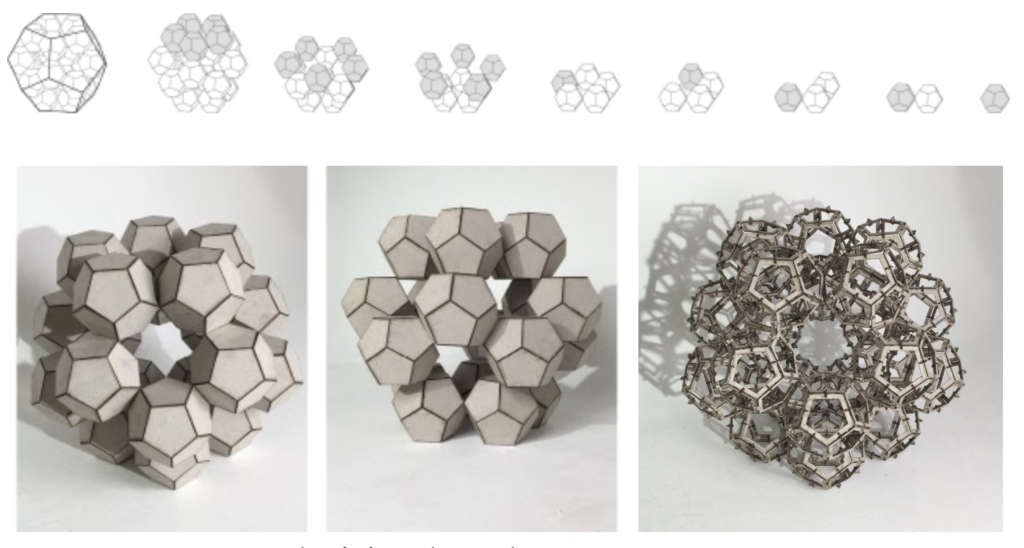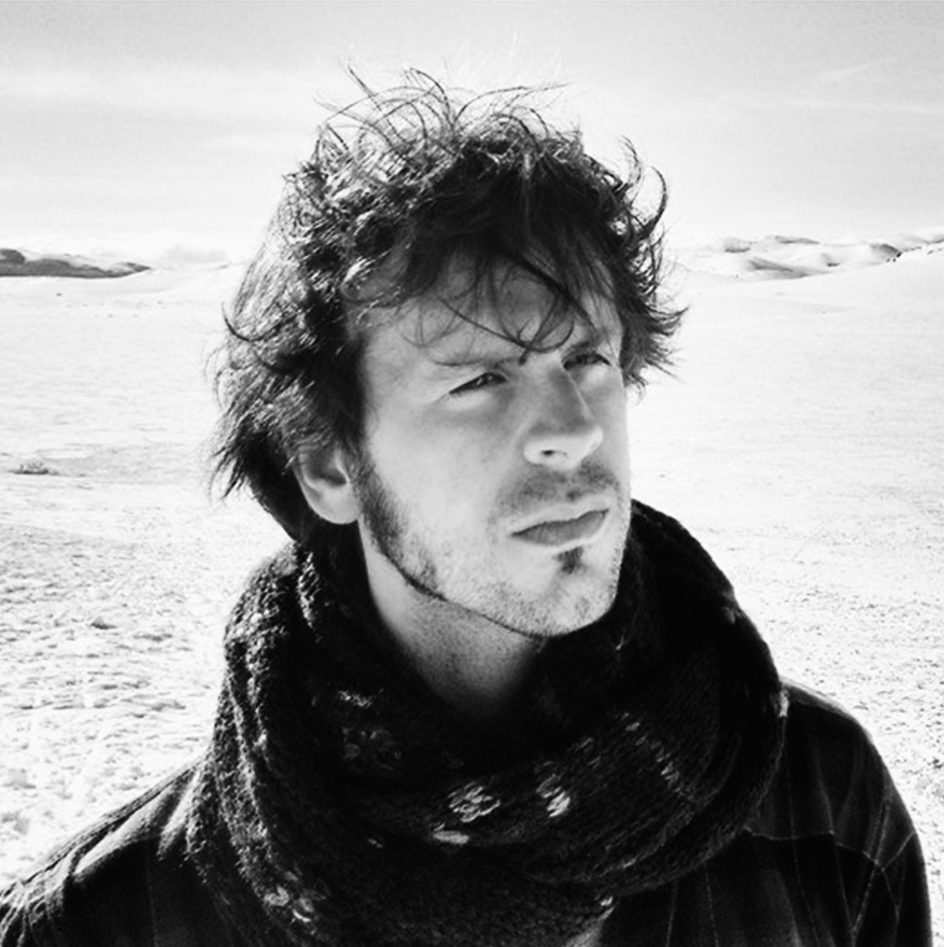INTRODUCTION TO DIGITAL FABRICATION
Recursive Geometries
Seminar Faculty: Lana Awad, Shyam Zonca and Ricardo Mayor
Digital Fabrication is an introductory course on new production techniques through the relation between computer data and machine-oriented fabrication.

Credits: IwamotoScott Architecture, Voussoir Cloud installation, SCI-Arc, Los Angeles, August 2008
CNC machines were introduced in the middle XXth century into industry, changing the conception of the production of objects and parts (mainly in the automotive and military industries, and then into mass-consumed products). The relationship between architecture and digital fabrication CAD / CAM processes in architecture is not new anymore, it started during the last two decades of the XXth century, bringing in a new relationship that is not only affecting the way architecture is produced but is changing the way machines are constructed and conceived for the production of architecture.
At first, the relation between architecture and digital fabrication has been focused on the production of non-standard parts/components and on the speculation of forms as an end itself. Instead, the seminar will focus on geometry and machines as a means to develop the performance-based design with efficient fabrication methods.

Credits: (IN)Finitely Bound, WeWantToLearn, 2017
Faculty

Shyam Francesco Zonca is a product designer, who focuses on creating truly durable and richly detailed goods within the creative process.
He holds a Bachelor’s degree in Industrial Design from Politecnico di Milano and with two academic experiences in Brazil and Portugal, and a Master of Science in Product Design for Innovation.
Since he moved to Spain in 2017 he has been working with digital manufacturing in the academic area, IED and IAAC; and in projects that integrate digital technologies with handcrafted finishes.
In Milan and Rio de Janeiro he worked as Creative and Project Manager in different areas of design, including products, furniture, digital fabrication, events and visual merchandising. Following this line, he has executed not only creation works, but also collaborated with craftsmen and production control.
Website: shyamzonca.com

Lana Awad is a Jordanian architect and researcher specializing in digital fabrication in Architecture. She holds a Bachelor’s degree of Architecture from the American University of Sharjah (UAE, 2010) and a Master Degree in Advanced Architecture from IAAC (Spain, 2013), specialising in digital fabrication and large-scale additive manufacturing in architecture. Additionally, she also completed the Fab Academy programme and was selected to complete her research through the Fab Thesis programme.
Her work since has focused strongly on digital fabrication within social studies and political contexts. She was the Creative Director for Refugee Open Ware, a global innovation consortium aimed at employing advanced technology for the advancement of human rights in conflict zones. After which she became Project Manager for Atta33, a digital fabrication laboratory and co-making workshop in Poblenou. Her personal projects range from conceptual VR projects on identity and empathy (The Machine to be Another) to designing 3D printed prosthetics for Syrian refugees. More recently she has been collaborating with several architecture offices including External Reference Architects, Cloud9, and Built by Associating Design.

Ricardo Mayor is a Master in Architecture Superior Technical School of Architecture of Alcalá de H. in Madrid and a Master Degree in Advanced Architecture from IAAC (Spain).
He graduated in 2012, obtaining a prize for his academic results and a further one for his final project. Since then he is one of the four founders of Design of Architectural Territories – DAT Pangea – who was awarded the first prize for the Best Young Architects in Europe for their Sustainable construction by LafargeHolcim Foundation.
His working career has been mainly developed in architectural and engineering offices in Madrid, Barcelona and Paris, taking part in internationally recognized projects with international architects such as Frank Ghery or OMA.
His main research faces themes such as design, fabrication and politics, focusing in particular on social issues to suitable solutions, and he implements them through his professional and academic practice.
